Chad. For many, the name conjures images of a vast, unforgiving desert, a place sometimes called the “Dead Heart of Africa.” But for the traveller who dares to look closer, a different truth reveals itself.
This is not a dead heart. It is a beating heart—a land of raw, unfiltered nature, where landscapes feel like they belong on another planet.
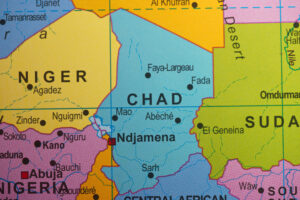
This is a place of deep crimson sands that cradle shockingly blue lakes. It’s a land where towering sandstone arches defy gravity and canyons hide pockets of life that have survived for millennia. Exploring Chad is not about ticking off a list of sights; it’s about immersing yourself in some of the most profound and untouched natural beauty on Earth.
This journey, however, is for the true adventurer. It requires planning and respect. Your first crucial step, the digital key that unlocks this ancient land, is securing your Online Chad eVisa. This guide will walk you through both the practicalities of your application and the sheer wonder of the destinations that await.
Your First Step into the Sahel: Securing Your Chad eVisa
Not long ago, getting permission to travel to Chad was a complex, paper-based process. The introduction of the eVisa system has been a game-changer, making the country more accessible to foreign visitors than ever before.
Do You Need an eVisa?
The short answer is: most likely, yes. The vast majority of non-African nationalities require an eVisa to enter Chad for tourism.

Gathering Your Digital Documents
The eVisa process is entirely online, but you need to have your documents in order before you begin. Think of it as packing your digital bag. You know Chad Visa Requirements:
- A scanned copy of your passport’s information page. Ensure your passport is valid for at least six months from your date of entry.
- A recent, passport-style digital photograph against a plain background.
- Proof of your accommodation, such as a hotel reservation for your first few nights.
- A copy of your round-trip flight itinerary.
- A Letter of Invitation (LOI). This is a crucial document. Your LOI must be from a registered Chadian tour operator or a contact within the country. This is another reason why travelling with a certified local guide is essentially mandatory.
A Word on Timing
While the eVisa system is efficient, do not leave it to the last minute. Give yourself several weeks of buffer time. Apply at least three to four weeks before your planned departure. This allows for any potential processing delays and gives you peace of mind.
With your application submitted, you can now focus on the incredible adventure that awaits.
1. The Ennedi Massif: A Sandstone Wonderland Carved by Time
If there is one place that defines the epic scale of Chad’s beauty, it is the Ennedi Massif. A UNESCO World Heritage site, this is not a single mountain but a vast plateau in the heart of the Sahara, eroded by wind and water into a labyrinth of canyons, arches, and towering rock formations.
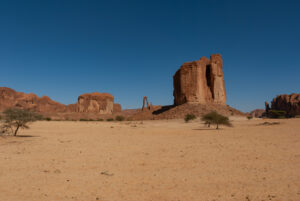
A Living Art Gallery
Imagine a fortress of stone the size of Switzerland. You drive for hours through what feels like an immense, open-air sculpture park. The silence is profound, broken only by the wind. The landscape changes with the light, shifting from soft orange at dawn to a deep, dramatic red at sunset.
Highlights of the Ennedi:
- The Guelta d’Archei: This is one of the most iconic sights in the entire Sahara. Tucked away at the end of a hidden canyon is a permanent waterhole, its dark water reflecting the towering orange cliffs that surround it. But the real magic is the daily spectacle of hundreds of camels being brought here to drink. The echoing cacophony of their cries, the sight of them wading through the water, is a scene unchanged for centuries. Look closely at the water’s edge, and you might spot the last remaining colony of Saharan crocodiles, living fossils in this ancient oasis.
- The Great Arches: The Ennedi is home to countless natural rock arches, but some are truly monumental. The Aloba Arch, one of the largest in the world, soars to a height of nearly 400 feet. Standing beneath it is a humbling experience, a powerful reminder of the patient, artistic force of erosion.
- Ancient Rock Art: The caves and rock faces of the Ennedi are a library of human history. You’ll find thousands of paintings and engravings, some dating back over 7,000 years, depicting giraffes, cattle, and humans. It’s a direct connection to the people who thrived here when the Sahara was a lush, green savanna.
How to Experience It: The Ennedi is inaccessible to independent travellers. A trip here requires a full 4×4 expedition with a reputable, licensed Chadian tour operator. They will handle all the logistics, from navigation and permits to food, water, and fuel.
2. The Lakes of Ounianga: A Miracle of Water in the Desert
Deep in the northern desert, you’ll find another UNESCO World Heritage site that seems to defy logic: the Lakes of Ounianga. This is a series of 18 interconnected lakes, a splash of impossible turquoise, cobalt, and emerald against the endless ochre dunes of the Sahara.
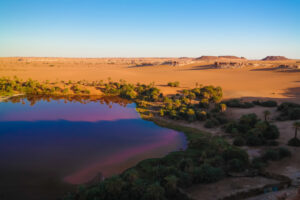
A Geological Wonder
This is not a mirage. The lakes are fed by underground fossil water that fell as rain thousands of years ago. Some of the lakes are freshwater, fringed by green reeds and palm groves. Others are hypersaline, their shores encrusted with shimmering white salt.
The most famous of these is Lake Bokou. Standing on the edge of a dune, looking down at the ribbon of deep blue water, separated from a field of orange sand by a line of vibrant green palms, is one of the most stunningly beautiful sights in all of Africa.
A Traveller’s Note: The journey to the Lakes of Ounianga is a long and sandy one. It requires extensive desert driving. But the reward is a landscape so surreal and serene that it feels like a dream. The peace and quiet here are absolute.
3. Zakouma National Park: The Rebirth of a Wildlife Haven
While Chad is famous for its desert landscapes, it is also home to one of Africa’s most incredible conservation success stories: Zakouma National Park. Located in the south of the country, this is a vast expanse of savanna, woodland, and wetlands teeming with life.
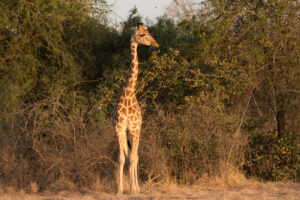
A Conservation Triumph
Zakouma was once decimated by poaching, but through heroic conservation efforts, it has been reborn. Today, it is a thriving sanctuary. The park is home to one of the largest herds of elephants in Central Africa, as well as lions, leopards, giraffes, cheetahs, and an astonishing diversity of birdlife.
A highlight of any visit is seeing the enormous flocks of red-billed quelea that move like a single, swirling organism across the sky. Or watching the elephants gather at the pans during the dry season. It is a powerful testament to the resilience of nature.
How to Experience It: Zakouma is managed by the renowned conservation group African Parks. You can stay at their lodges within the park, and they provide expert-guided game drives and walking safaris. Visiting Zakouma is not just a holiday; it’s a direct contribution to the preservation of this vital ecosystem.
4. The Tibesti Mountains: A Journey to a Lunar Landscape
For the most intrepid explorers, there is the Tibesti. This volcanic mountain range in the extreme north of Chad is the roof of the Sahara. It is a remote, rugged, and breathtakingly stark landscape of volcanic peaks, deep gorges, and dark, solidified lava flows.
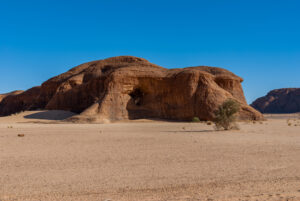
The Roof of the Sahara
The highest peak, Emi Koussou, is a massive shield volcano that rises over 11,000 feet. The views from its summit, and from across the entire range, are truly otherworldly. This is the planet’s raw geology laid bare.
The region is also home to the Toubou people, nomadic pastoralists who have mastered survival in this harsh and beautiful environment.
A Note on Travel: Trips to the Tibesti are serious expeditions. They require special permits, extensive logistical planning, and can only be undertaken by a handful of highly specialized tour operators. It is the ultimate Chadian adventure for those with a deep love for remote and challenging environments.
A Word on Responsible and Realistic Travel in Chad
Chad will reward you with experiences that few people on Earth will ever have. But it’s essential to travel here with the right mindset.
- A Guide is Not a Luxury; It’s a Necessity: This is not a country for independent travel. A professional Chadian tour operator is essential for your safety, navigation, permits, and communication. They are your bridge to understanding this incredible country.
- Embrace the Journey: You will spend many hours in a 4×4. The roads can be rough. Accommodation outside the capital is basic (often camping). See this not as a hardship, but as part of the authentic experience.
- Be Respectful: Dress modestly, especially in villages. Always ask for permission before taking someone’s photograph. Learn a few words of French and local Arabic—a simple “bonjour” and “merci” go a long way.
The Adventure Begins Now
Chad is a country that challenges and changes you. It strips away the noise of the modern world and connects you to something ancient, powerful, and profoundly beautiful.
It’s a journey that will test your endurance but reward you with clarity, silence, and a deep appreciation for the raw power of the natural world. It’s a journey that will not only show you a different part of the planet but a different part of yourself.
And it all begins with that one, simple, digital step: your Chad eVisa application.